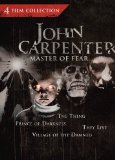| Reviews & Columns |
|
Reviews DVD TV on DVD Blu-ray 4K UHD International DVDs In Theaters Reviews by Studio Video Games Features Collector Series DVDs Easter Egg Database Interviews DVD Talk Radio Feature Articles Columns Anime Talk DVD Savant Horror DVDs The M.O.D. Squad Art House HD Talk Silent DVD
|
DVD Talk Forum |
|
|
| Resources |
|
DVD Price Search Customer Service #'s RCE Info Links |
|
Columns
|
|
|
John Carpenter: Master of Fear - 4 Film Collection
Carpenter was in his prime in the late 70's and early 80's, directing a veritable string of classics that include Assault on Precinct 13, the aforementioned Halloween and Escape From New York. It's a shame that it's been nearly a decade since the man's made a feature film, and that his last one, 2001's Ghosts of Mars, was atrocious. Luckily, John Carpenter is, as I write this, in production on a new movie (The Ward, out in 2010), and I've heard good things about his "Masters of Horror" episodes. After quietly canceling a previously-planned triple feature, Universal (perhaps in preparation for The Ward, or in response to remakes of pretty much all of the man's movies) has bundled all four of their Carpenter pictures into a 2-disc set titled John Carpenter: Master of Fear.
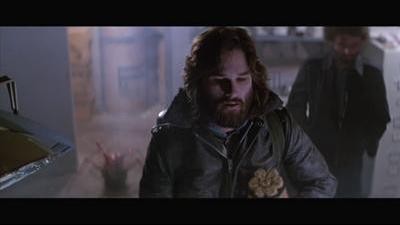 John Carpenter's The Thing (1982)
John Carpenter's The Thing (1982)
Other than Halloween, there's almost no doubt that The Thing is the film Carpenter is going to be remembered for. A remake of the Howard Hawks' production The Thing From Another World, the 1982 version ditches the pin-up girl and obsessive scientist and moves the action from the North Pole to Antarctica, where Carpenter can hone in on the helplessness and isolation of the characters. More importantly, it turns the Frankenstein-like monster glimpsed in the original into a Body Snatchers-esque organism that assimilates unwitting victims. The mystery of who is or isn't still human creates thick, brooding tension as the notion of rescue slips away and the men stare at each other suspiciously, formulating individual plans for survival. A large chunk of the movie is so predicated on the characters and acting that the viewer could almost forget it's a monster movie; like a fine-tuned play, some of the film is nothing more than the simmering interpersonal relationships coming to a head.
Yet The Thing also contains some seriously unforgettable gore, courtesy of effects wizard Rob Bottin. I watched the movie for the first time at least six years ago, and the first gore gag of the resuscitation scene still stands out as one of, if not the most instantly memorable visuals I've ever seen in a movie. Even today, with "torture porn" constantly looking to up the ante with more and more gritty, grungy, agonizing realism, Bottin's creation sticks in the mind like the others don't. Along with the blood test sequence that comes shortly afterward, Bottin's terrifying, unsettling movie magic is summed up best by Palmer (David Clennon) in disbelief: "You gotta be f---ing kidding..."
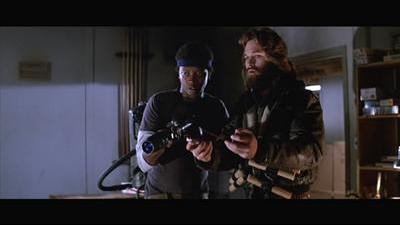 All of the performances in The Thing are excellent, but the movie boils down to three key roles. First, Carpenter's pal Kurt Russell stars as helicopter pilot RJ MacReady. It takes half the movie before Russell's character steps up as the leader, but he's exactly the right blend of logical, intelligent, sarcastic, and volatile. MacReady doesn't want to lead, but he's not exactly a reluctant hero or a complainer, either: he sees the problem in front of them, and instantly understands how that problem is more human than alien. Russell is flanked by the always-dependable, richly-voiced Keith David (another Carpenter standby). David's character Childs is a pessimist, or at best, a skeptic. Childs seems more irritated than shocked by the creature's existence, and the mostly-unspoken suggestion that his temperamental attitude might cause him to take matters into his own hands only adds to the tension. The film's puzzle is completed by Wilford Brimley as Blair, who calmly observes computer simulation of the Thing reaching civilization (one of the best parts of the movie) and subsequently jumps the rails. Blair is a complete wild card: even if you understand his motivation, he remains unpredictable and disturbingly detached from reality. These three characters alone would be enough to build a suspense thriller on, so the well-defined personalities of the other characters are just icing on the cake.
All of the performances in The Thing are excellent, but the movie boils down to three key roles. First, Carpenter's pal Kurt Russell stars as helicopter pilot RJ MacReady. It takes half the movie before Russell's character steps up as the leader, but he's exactly the right blend of logical, intelligent, sarcastic, and volatile. MacReady doesn't want to lead, but he's not exactly a reluctant hero or a complainer, either: he sees the problem in front of them, and instantly understands how that problem is more human than alien. Russell is flanked by the always-dependable, richly-voiced Keith David (another Carpenter standby). David's character Childs is a pessimist, or at best, a skeptic. Childs seems more irritated than shocked by the creature's existence, and the mostly-unspoken suggestion that his temperamental attitude might cause him to take matters into his own hands only adds to the tension. The film's puzzle is completed by Wilford Brimley as Blair, who calmly observes computer simulation of the Thing reaching civilization (one of the best parts of the movie) and subsequently jumps the rails. Blair is a complete wild card: even if you understand his motivation, he remains unpredictable and disturbingly detached from reality. These three characters alone would be enough to build a suspense thriller on, so the well-defined personalities of the other characters are just icing on the cake.
The Thing opened to low box-office in 1982. It was released against E.T.: The Extra-Terrestrial, and the PG-rated, happy alien story (which is, to be fair, a wonderful classic in its own right) raked in the dough. Almost 30 years later, though, The Thing has rightfully carved out its own place as a science fiction and horror classic, with that palpable paranoia as potent as ever every time I see it. Despite its deadly title creature, The Thing is a prime example of man vs. man, a film as chilling and unforgiving as its setting.
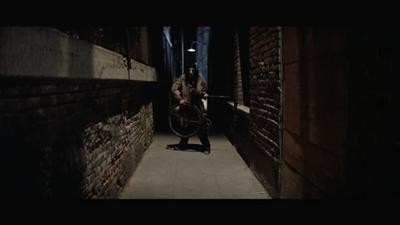 John Carpenter's Prince of Darkness (1987)
John Carpenter's Prince of Darkness (1987)
The second in Carpenter's self-ascribed "Apocalypse Trilogy" (The Thing being the first and In the Mouth of Madness being the third), Prince of Darkness is a minor classic. The film follows a group of students and scientists studying the horrible truths locked in the basement of an ancient church. It's not nearly as frightening as The Thing or as cool as They Live, but there are a few strokes of absolute Carpenter brilliance to help counteract the film's occasional stumbles.
One of the quietest but constant flaws with the film is the editing. At 102 minutes, Prince of Darkness is incrementally distended, letting speeches and scenes go on too long by five and ten seconds until the entire movie is too long by seven or so minutes. On top of the overlong running time, the film also isn't paced very well on a sequence-by-sequence basis, literally writing itself into a corner in a too-long stretch where the characters are separated by a wall and attempt to hack through it. On the acting front, it's great to see Carpenter and Donald Pleasence working together again, but the veteran's role as a priest amounts to little more than a version of his Halloween character with less meat on the bones (a character that also happens to be named Loomis). Pleasence's skill at intoning gravely about the meaning of evil being unleashed hasn't dulled any, but the writing has.
What works, and works extremely well, is one of the movie's simplest concepts: a dream "transmission" from the future, sent as a visual warning to everyone in the church, 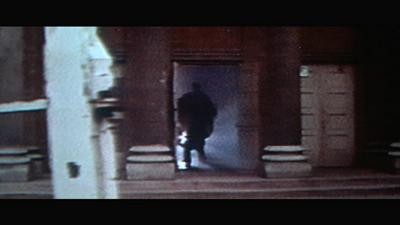 in the hopes that something terrible can be prevented from happening. Shot on what looks like VHS tape and seen only in glimpses, it's an instantly evocative idea that the director just nails. The idea of a shared nightmare between people occupying a single space is interesting and creepy all on its own, but the message itself is so foreboding and ominous that it always makes my blood run cold while I marvel at the seemingly endless ideas at work within this single element. The translation of a book found in the church basement is effective too: one of the students types out the passages in English, and it adds up to a far more terrifying warning than all of Pleasence's metaphors put together. Swarms of bugs (including ants and beetles) are also likely to make the skin crawl, and shock rocker Alice Cooper makes a cameo as a possessed bum.
in the hopes that something terrible can be prevented from happening. Shot on what looks like VHS tape and seen only in glimpses, it's an instantly evocative idea that the director just nails. The idea of a shared nightmare between people occupying a single space is interesting and creepy all on its own, but the message itself is so foreboding and ominous that it always makes my blood run cold while I marvel at the seemingly endless ideas at work within this single element. The translation of a book found in the church basement is effective too: one of the students types out the passages in English, and it adds up to a far more terrifying warning than all of Pleasence's metaphors put together. Swarms of bugs (including ants and beetles) are also likely to make the skin crawl, and shock rocker Alice Cooper makes a cameo as a possessed bum.
Like The Thing, Prince of Darkness is an ensemble picture, but the film allows a little more showcasing of Brian (Jameson Parker) and Catherine (Lisa Blount) than that film gives MacReady (who always seemed like a member of a team, even in scenes by himself). The pair develops a low-key relationship that's thankfully designed to fill in character motivation rather than being central to the plot, and the two manage to stand out in the time they have. I'm also a fan of Peter Jason, a regular in Carpenter's movies. I would have liked to see more of his professor character, but I suppose having him around at all is better than nothing. The weakest link in the cast is Dennis Dun, who gets saddled with a ton of terrible jokes and an unfortunate screaming scene, and he adds insult to injury by delivering both in a terribly stilted manner.
So far, I've only seen Prince of Darkness twice, and yet I can already feel it growing on me. A third viewing might push it up alongside Carpenter's best pictures. A set like Master of Fear is the perfect place for the movie; viewers will likely buy the set for The Thing, but perhaps Prince of Darkness will surprise them. It's a film that feels overlooked within Carpenter's impressive catalog, but it's a gem in the middle of a string of his best movies. Perhaps time will allow it a well-deserved chance to take the spotlight.
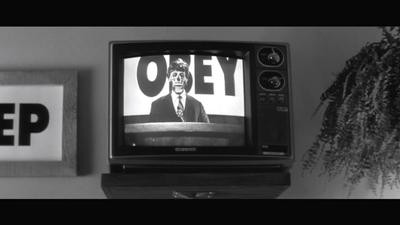 John Carpenter's They Live (1988)
John Carpenter's They Live (1988)
I'm probably just crazy, since the film has a solid reputation, but I feel like They Live still doesn't quite have the esteem it deserves one of the great sci-fi/horror films of the 1980s. Every horror nerd and even many average Joes have seen Army of Darkness, but would they be able to identify Duke Nukem's other stolen dialogue as coming from this movie? Not so likely. Yeah, okay, this feeling of injustice is also driven by my own personal love for They Live, but I still think the film needs some time to shine as a legitimate cult classic all on its own, not just as "another great John Carpenter film" that comes up when the conversation turns to The Thing.
One of the parts that's probably holding the movie back is the pacing. Carpenter takes his time as our hero John Nada ("Rowdy" Roddy Piper) wanders into town, looks for work and eventually follows Frank (Keith David again) to a tent city with some free food, which probably eats up a half-hour of screen time. Meanwhile, Carpenter's ghost-town, gunslinger score (with Halloween composer Alan Howarth) doesn't make the movie move any faster, sauntering around as leisurely as John does. Personally, I like Piper and I really like Keith David, so watching the actors just wander around chatting is the kind of material that would amuse me all on its own, but I'd bet dollars to donuts this extensive build-up shaves off a few potential viewers.
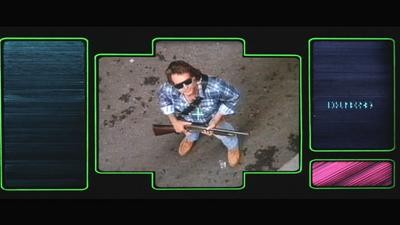 Eventually John notices something's up at the church providing food to the tent city, and he goes in a little closer to investigate. What he finds is startling: a box of sunglasses that allow him to see grotesque, skeletal-looking aliens with disco-ball eyes spouting sinister subliminal messages. These extra-terrestrial villains look ghoulish and their obvious control over us is kinda creepy (there's a human resistance meeting near the end of the film, and it makes you wonder if we're really down to our last dregs), but They Live is only partly a horror film. Once John sees what's going down, he takes it upon himself to clean up Earth, and the film promptly turns into a sci-fi action movie. The only thing in his way: additional action! John encounters Frank in an alley, and the pair proceed to have an extremely awesome 10-minute back-alley street fight as John tries to get Frank to "put the glasses on!" Again: this movie deserves to be considered a classic.
Eventually John notices something's up at the church providing food to the tent city, and he goes in a little closer to investigate. What he finds is startling: a box of sunglasses that allow him to see grotesque, skeletal-looking aliens with disco-ball eyes spouting sinister subliminal messages. These extra-terrestrial villains look ghoulish and their obvious control over us is kinda creepy (there's a human resistance meeting near the end of the film, and it makes you wonder if we're really down to our last dregs), but They Live is only partly a horror film. Once John sees what's going down, he takes it upon himself to clean up Earth, and the film promptly turns into a sci-fi action movie. The only thing in his way: additional action! John encounters Frank in an alley, and the pair proceed to have an extremely awesome 10-minute back-alley street fight as John tries to get Frank to "put the glasses on!" Again: this movie deserves to be considered a classic.
They Live is also a comedy. Carpenter's films have always shown a black sense of humor, but They Live is built on it, taking aim at the materialism and indulgence of the 1980's. John and Frank's startling discovery near the end of the movie walks a perfect fine line: it's chillingly easy to see the inevitably dark outcome on the horizon for the people John and Frank get a glimpse of, and a cynical joke how easily we've been suckered in anyway. The triumph, though, is that Carpenter's criticism of society is worked in without dragging the movie down; it feels like a knowing nudge rather than an impassioned sermon or a moralizing message. They Live, even when it's making a point, is extremely entertaining; despite the satire, this is an unpretentious blast of anti-alien mayhem, shot with style and containing more attitude than acting. The movie wears its infamous one-liner like a badge of honor: They Live has come here to chew bubblegum and kick ass, and it's all out of bubblegum.
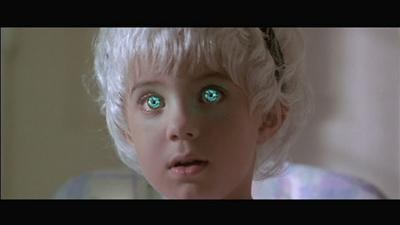 John Carpenter's Village of the Damned (1995)
John Carpenter's Village of the Damned (1995)
Here it is: the one inclusion in the collection I hadn't already seen. Village of the Damned has a bit of a reputation as one of Carpenter's weaker films, and the last time I watched one of those, I was watching the depressingly bad Ghosts of Mars. Thankfully, the movie isn't quite that bad, but it is a curiously paralyzed film. Many of Carpenter's signatures are there, and most of the movie is pretty good, but on the whole, the picture fails to gel.
Unlike The Thing From Another World, I haven't seen the original Village of the Damned, so I can't make comparisons. In Carpenter's version, an eerie shadow flies over the small town of Midwich, causing the entire population to pass out, killing two people. In the following weeks, the women of the town make a startling discovery: they're all pregnant. A federal scientist named Dr. Susan Verner (Kirstie Alley) arrives and informs the locals that they'll receive free medical and a monthly allowance of $3,000.00 if they decide to keep the child and allow testing and scientific study.
Watching Village of the Damned, I couldn't shake the sensation that this was a two hour movie cut to its current 99-minute length. Clearly, part of this is that the film requires the children to age quickly, and therefore their growth is rushed through, but the parents seem remarkably inactive in the interim. Isn't anyone creeped out by their ability to read people's minds? Doesn't anyone question their cold, clinical way of speaking? Does anyone know or care where the lot of them get their matching gray 1930's clothing? 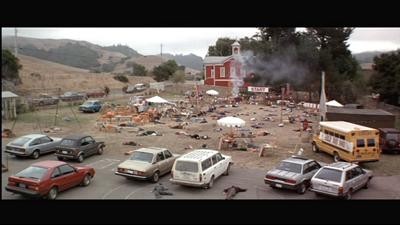 At one point, the children move out of their houses and inhabit a local barn together, and confusingly, the parents dutifully drive the little brats out there, despite there being at least two parents who are clearly against the idea. It would make more sense for the children to simply pack and leave rather than the adults giving into their weird ways. A few of the adults, like Mark Hamill's Reverend George, also seem like they've been reduced to the bare necessities (in a late scene, he appears at the same barn, but we don't see his arrival or see the events that motivated him to show up).
At one point, the children move out of their houses and inhabit a local barn together, and confusingly, the parents dutifully drive the little brats out there, despite there being at least two parents who are clearly against the idea. It would make more sense for the children to simply pack and leave rather than the adults giving into their weird ways. A few of the adults, like Mark Hamill's Reverend George, also seem like they've been reduced to the bare necessities (in a late scene, he appears at the same barn, but we don't see his arrival or see the events that motivated him to show up).
Carpenter has also landed two stars that don't quite fit into their roles. Kirstey Alley's character is one of those annoyingly smug professionals that always pop up in movies, made more irritating by the fact that their decisions are poor and often nonsensical. To this, the film adds the indignity of being nothing but a pawn in the plot, with her motivation changing at the drop of a hat because the script thinks it needs her character to do things. Christopher Reeve, meanwhile, has the opposite problem: he always looks unsure of why he's there. He's not irritating the way Alley is, but instead of engaging the audience, he wanders around like he's lost and walked onto the wrong set. Of anyone, Crocodile Dundee's Linda Kozlowski is the movie's most interesting and engaging character, but the script reduces her to getting locked in classrooms and looking disturbed while Reeve and Alley take up the bulk of the screen time.
The music, several of the shots and much of the atmosphere are all vintage Carpenter, but the screenplay's scare factor runs itself in circles. By the time the movie ends, there's no more horror to be had in the demon kids and their fiery eyes, and the best thing Village of the Damned does past the halfway mark is end on a fairly solid note. It's not the worst film in Carpenter's oeuvre -- in fact, since the outward appearances are all there, it's mildly fascinating to try to figure out what exactly went wrong -- but it's by far the weakest one in this collection.
The DVD
Looking at the John Carpenter: The Master of Fear 4 Film Collection online, I thought the artwork was awkwardly designed, with images from the four DVD covers assembled along with their titles in what I'd call an arbitrary scattering. Even the title of the collection itself sits off to the side in a weird way. Holding the actual DVD, which has a really classy, subdued foil slipcover and a slick, clear-plastic DVD case, it works quite a bit better. 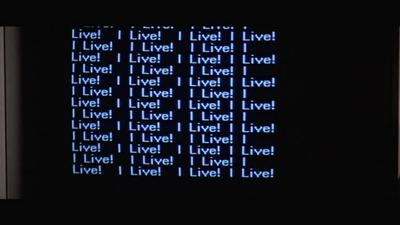 The arrangement of the back cover looks stylish, and the inside, with the billing blocks laid out on the back of the front cover, is nice as well. The discs have a black paint finish with the silver disc surface for lettering, and there's a Hollywood Movie Money check-style coupon for $5 off Halloween candy, which expires on November 30th.
The arrangement of the back cover looks stylish, and the inside, with the billing blocks laid out on the back of the front cover, is nice as well. The discs have a black paint finish with the silver disc surface for lettering, and there's a Hollywood Movie Money check-style coupon for $5 off Halloween candy, which expires on November 30th.
The Video and Audio
Carpenter's love of scope is obvious: all four films in the set are in 2.35:1 anamorphic widescreen. Universal has been creating multi-film releases for awhile now that offer exclusive, newly-remastered presentations (like the widescreen versions of Twins and Kindergarten Cop only available in the Arnold Schwarzenegger Comedy Collection). As an owner of all four individual John Carpenter releases, I can confirm this DVD offers also contains a few visual upgrades.
Universal first issued The Thing in one of their Collector's Editions with the familiar gold-strip-framed cover design and a thick booklet. That version was non-anamorphic. In 2004, alongside the Dawn of the Dead remake, they released a digitally remastered, anamorphic version of the same disc. In studying that edition, I noticed some digital softness and what may have been dirt on the print, and a tiny amount of haloing (visible when the characters are outside, surrounded by white snow). Looking at this disc, the clarity of the image is much stronger, with better fine detail, the haloing is gone, and the print seems to be cleaner. I've never seen the non-anamorphic disc, so I don't know how much of a jump the transfer made from 1998 to 2004, but I can say that the difference between the 2004 and 2009 transfers was both not an overwhelming improvement, but still quite apparent to me without meticulous inspection. On Prince of Darkness, the clarity also takes a significant step up (a little more than The Thing), but the more noticeable difference was how vivid the colors are in the new set. Skintones look lively, red blood jumps off the screen and the green grass looks lush and striking.
Disc 2 is less impressive. They Live's image is alright; for an 80's B-movie transfer I'd probably say it's pretty good, and detail may be a little better than it was on the earlier DVD. Downsides include a fair amount of print specks and scratches (especially on some of the black-and-white "glasses" shots,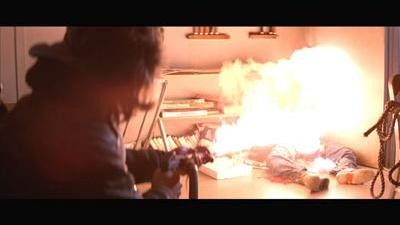 such as the ones inside the bank, although it's possible this is intentional), and I think there's an entire additional level of depth that could be wrung from the image with richer blacks/contrast and more vivid colors. Village of the Damned looks the worst, though, with a picture that is occasionally so soft and fuzzy that I almost wonder if it was sourced from some sort of analog tape (especially the opening credits). Quality, first-generation analog tape, but analog tape all the same. It gets a little better as it goes on -- there are definitely shots here that look okay -- but the insistent fuzziness basically plagues the entire film. Colors also seem a tad muted.
such as the ones inside the bank, although it's possible this is intentional), and I think there's an entire additional level of depth that could be wrung from the image with richer blacks/contrast and more vivid colors. Village of the Damned looks the worst, though, with a picture that is occasionally so soft and fuzzy that I almost wonder if it was sourced from some sort of analog tape (especially the opening credits). Quality, first-generation analog tape, but analog tape all the same. It gets a little better as it goes on -- there are definitely shots here that look okay -- but the insistent fuzziness basically plagues the entire film. Colors also seem a tad muted.
The sound, on the other hand, has not been given a noticeable upgrade. All four retain the same primary track from previous DVD releases, which means 5.1 for The Thing and Village of the Damned, but only 2.0 Surround for Prince of Darkness and They Live. The Thing sounds the best, with crisp, crystal-clear sounds and good surround usage of Carpenter's synth score. They Live and Prince of Darkness sound a little more like 80's movies, with a touch of surround activity (Carpenter's music again). None of it sounds lacking, which is good, and I suppose I'd rather have okay 2.0 mixes rather than a hastily done 5.1 mix (since I doubt Universal would have pulled out any stops for this DVD). Non-English viewers are out of luck, though: any alternate-language audio or subs have been stripped and all that remains is English captions for the deaf and hard of hearing.
The Extras
Here's where the collection falls short. It's true that three of the four films in the set had barebones DVDs in the US (a trailer, bios and production notes on Village of the Damned, 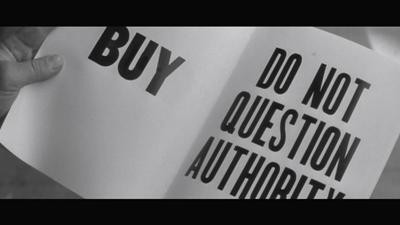 a trailer on Prince of Darkness and nothing at all on They Live), but The Thing, of course, has a fully decked-out Collector's Edition, with the great documentary "Terror Takes Shape" and a classic Carpenter/Russell audio commentary.
a trailer on Prince of Darkness and nothing at all on They Live), but The Thing, of course, has a fully decked-out Collector's Edition, with the great documentary "Terror Takes Shape" and a classic Carpenter/Russell audio commentary.
Expanding to the bigger picture, Universal has also failed to bring over extras available on the Region 2 editions of the 80's films: Carpenter audio commentaries on both (with "Rowdy" Roddy Piper on They Live and actor Peter Jason on Prince of Darkness), plus documentaries, featurettes, interviews and more. Had the collection included trailers for all four films and perhaps the Carpenter/Russell commentary, the value of the package would have taken a big leap, but as it is, this is a strictly no-frills kind of deal.
Conclusion
I feel both ways about this collection. A casual movie lover or a new inductee into the John Carpenter fan club should also enjoy the set for what it is: two classics, one excellent film and an extra Carpenter for free in an attractive, affordable package, and anyone who's been hanging onto the original DVD of The Thing all this time but doesn't have the others should pick this set up too, for the two remastered transfers and to get the other three Carpenter films in a bundle. On that level, it is highly recommended -- I love extras, but even without The Thing's classic documentary or audio commentary, the cost coupled with such great movies really makes this a steal. For hardcore fans, though, there's nothing new here...we can hope by the time Blu-Rays roll around, Universal will wise up and finally license the extras available in the UK for our consumption.
Please check out my other DVDTalk DVD, Blu-ray and theatrical reviews and/or follow me on Twitter.
|
| Popular Reviews |
| Sponsored Links |
|
|
| Sponsored Links |
|
|
| Release List | Reviews | Shop | Newsletter | Forum | DVD Giveaways | Blu-Ray | Advertise |
|
Copyright 2024 DVDTalk.com All Rights Reserved. Legal Info, Privacy Policy, Terms of Use,
Manage Preferences,
Your Privacy Choices | |||||||









